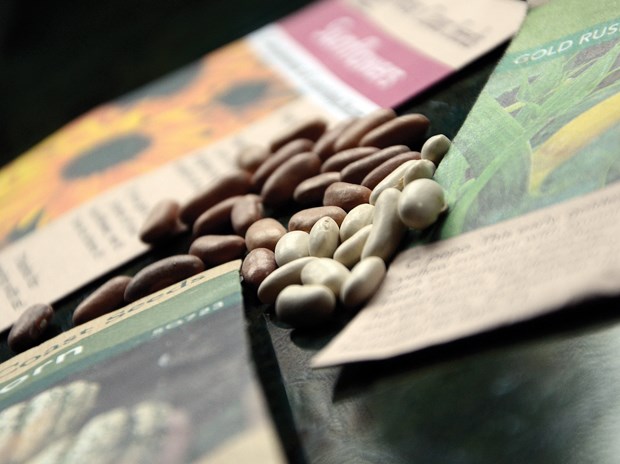This is a great time of year for planning your home vegetable garden, which means it is time to pick what seeds you would like to grow.
I've received several seed catalogues in the last week or so, and the bright photographs of gorgeous veggies always make me excited for a new year in the garden. We're lucky to have many excellent seed suppliers in our region, including West Coast Seeds, Salt Spring Seeds, Full Circle Seeds and Osbourne Seeds to name a few.
In a backyard garden it is typically hard to use a whole seed package in one season, so you probably have a growing collection of seed packages.
Before you put in this year's seed order, do a germination test on any seeds older than three years. Just count out five to 20 seeds, fold them into a moist paper towel, put the paper towel in a plastic bag or container, and check them each day. Keep the paper towel moist and in a few days you should notice small white roots sprouting from the seeds. If less than half of your seeds germinate it is a good idea to replace that package.
Whether you're a seasoned or brand new vegetable gardener, attending a Seedy Saturday event is a great way to pick up some new seeds, learn about seed saving, and meet other enthusiastic gardeners.
Local Seedy Saturdays include: Feb. 27 at VanDusen Botanical Garden, and March 12 hosted by the North Shore Neighbourhood House's Edible Garden Project. A main attraction at this year's North Vancouver Seedy Saturday will be the Seed Library developed by the City of North Vancouver Library and Edible Garden Project in 2015. Seed libraries provide basic seed-saving instructions and lend out small packages of seeds to plant at home.
The intent is for every seed package lent out to be "returned" with freshly saved seed at the end of the season.
We're lucky to have such a fantastic asset in our community, and borrowing from the Seed Library is a great way to learn how to save seed and it's easier than you think!
Once you've decided what seeds you want to plant, draw up a rough sketch of your garden and create a basic garden plan. Figure out where you want to grow each crop, how much of each crop you want to plant, and when you will be planting each crop's seeds or seedlings.
Keep this handy, and keep it in a clear, plastic baggie so it survives many trips into the garden throughout the season.
There are some heat-loving long-season crops, like tomatoes, that we cannot grow from seed outdoors and expect a good harvest in our region. Starting tomato seeds in February on a bright window sill or purchasing seedlings from a garden centre will solve this problem. It can be tempting for beginner vegetable gardeners to only buy seedlings when you see the lush rows of happy plants at the store. However, I suggest making the effort to grow at least salad greens from seed.
You'll be more observant and learn more about your garden while you tend sprouting seeds. This information will become invaluable as the season progresses.
Every garden is unique, and your vegetables will grow better the more you know about your garden - for example, what type of soil, the sunny and shady spots, where pests congregate, and where it is dry and moist.
Every month we will explore new topics and tips in this column that are intended to help you grow a bountiful veggie patch in 2016.
Emily Jubenvill grew up on the North Shore and is passionate about growing fresh organic food. When she's not in the garden you'll find her on a mountain or by the sea. She's the manager of the North Shore Neighbourhood House's Edible Garden Project, and you can reach her at [email protected] or ediblegardenproject.com.



